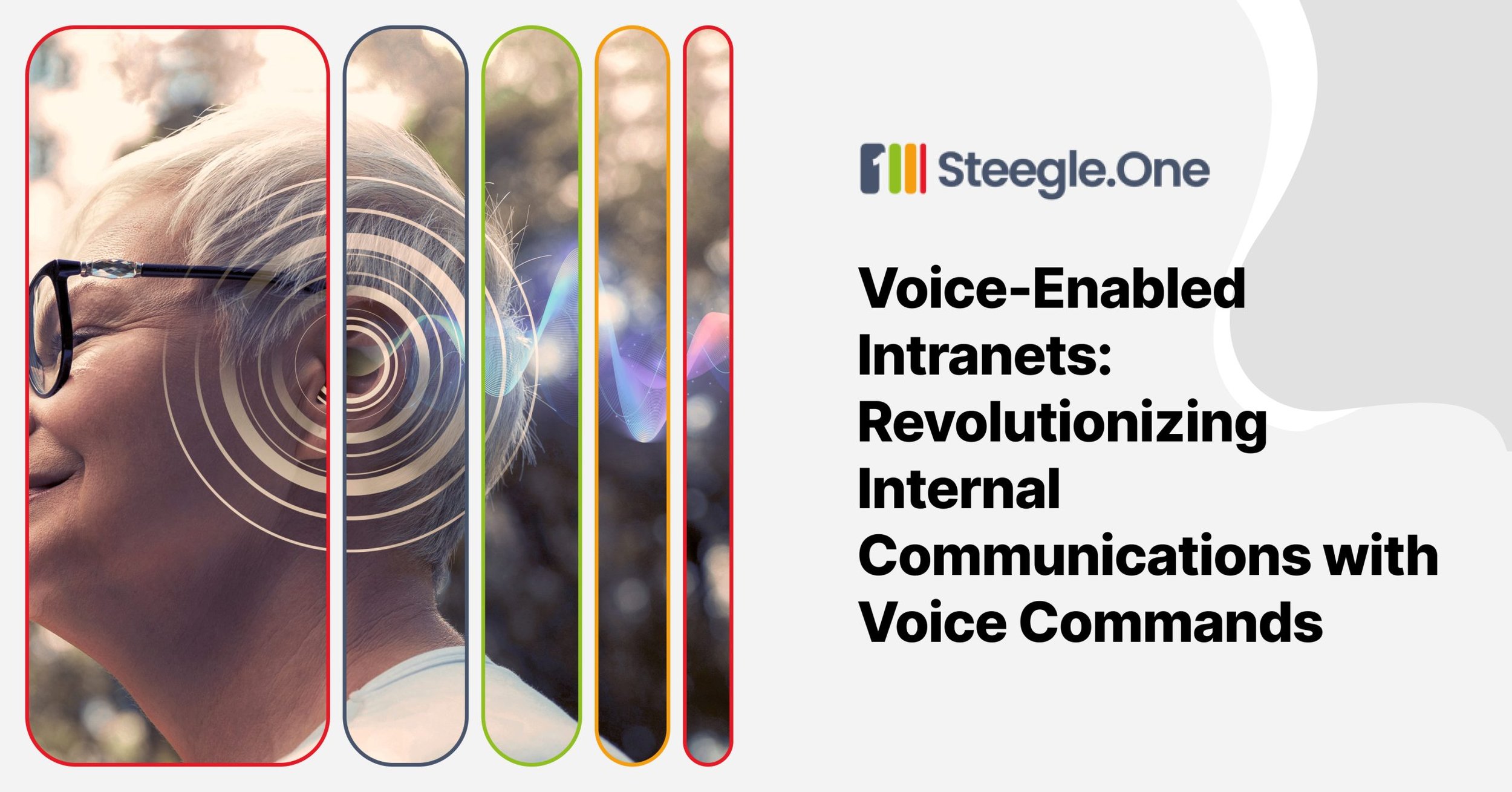Voice-Enabled Intranets: Revolutionizing Internal Communications with Voice Commands
Key Takeaways
| Trend | Description |
|---|---|
| Advanced Voice Recognition | Unprecedented accuracy, transforming digital tasks. |
| AI Integration | Enhanced efficiency and personalized communication. |
| Hybrid Communication Ecosystems | Support for both in-office and remote work. |
| Employee Wellbeing | Addressing AI-induced anxiety and mental health. |
| Interactive Multimedia Platforms | Diversifying communication methods beyond text. |
The Evolution of Workplace Communication
In 2024, the workplace is undergoing a significant transformation, driven by advancements in voice technology and artificial intelligence (AI). Voice-enabled intranets are at the forefront of this change, offering a new way to interact with digital workspaces through natural language commands. This evolution marks a shift from traditional text-based interfaces to more intuitive, voice-driven interactions, enhancing both efficiency and user experience.
The Impact of Voice Technology on Internal Communications
Advanced Voice Recognition
Thanks to improvements in AI, voice recognition technology now offers unprecedented accuracy. Employees are increasingly using voice commands to perform a variety of digital tasks, from scheduling meetings to accessing company data, all without the need for traditional input methods like keyboards and mice. This hands-free approach allows for multitasking and reduces the time spent on routine tasks, significantly boosting productivity.
AI-Driven Personalization
The integration of AI into internal communication tools is becoming commonplace. AI chatbots, for example, can provide personalized onboarding experiences for new hires, while AI-driven analytics can offer insights into communication patterns and employee engagement levels. These technologies enable a more personalized approach to employee interaction, catering to individual needs and preferences.
Navigating Hybrid Work Environments
The rise of hybrid work models has necessitated the development of communication ecosystems that support both in-office and remote employees. Voice-enabled intranets play a crucial role in this environment, offering a centralized platform for accessing information and resources regardless of location. By facilitating seamless communication and collaboration, these platforms help maintain a cohesive corporate culture and ensure that all team members are aligned with company goals.
Prioritizing Employee Wellbeing
The integration of voice technology and AI into the workplace also raises concerns about employee wellbeing. As the workplace becomes more digitized, companies must address the potential for AI-induced anxiety and ensure that employees feel valued and secure. Voice-enabled intranets can contribute to wellbeing by streamlining work processes and reducing stress, but they must be implemented as part of a broader strategy that includes support for mental health and job security.
Looking Ahead: The Future of Internal Communications
As we look to the future, it’s clear that voice-enabled intranets will continue to play a vital role in shaping internal communications. By embracing these technologies, companies can create more dynamic, efficient, and engaging work environments that support the needs of their employees. The ongoing evolution of voice technology and AI promises to bring even more innovative solutions to the forefront, further revolutionizing the way we work.
For more insights into the future of digital workplaces and to explore our solutions, visit our pages on Steegle.One Implementation, Voice-Enabled Intranet Solutions, and Google Workspace Integration.
Voice-Enabled Intranets: Revolutionizing Internal Communications with Voice Commands
Embracing the Digital Transformation
The digital transformation within the workplace has been significantly accelerated by the adoption of voice-enabled intranets, leveraging the power of AI and voice technology to redefine internal communications. These advanced platforms offer a seamless, intuitive interface that empowers employees to interact with their digital environment in a more natural and efficient way, marking a pivotal shift from conventional methods towards a voice-first approach.
Enhancing Accessibility and Inclusion
A key advantage of voice-enabled intranets is their ability to enhance accessibility and promote inclusion within the workplace. By allowing users to navigate, access information, and perform tasks using voice commands, these platforms cater to a diverse range of employees, including those with physical disabilities or those who prefer auditory learning. This inclusivity not only fosters a more accommodating work environment but also underscores a company’s commitment to diversity and equal opportunity.
Streamlining Workflow and Productivity
Voice technology facilitates a more streamlined workflow, enabling employees to multitask effectively and manage their tasks with greater efficiency. For instance, through simple voice commands, users can quickly set reminders, schedule meetings, or search for documents without interrupting their current work. This hands-free operation minimizes disruptions and maximizes productivity, allowing employees to focus on more strategic tasks.
Fostering Collaboration and Engagement
The integration of voice-enabled features into intranets also promotes collaboration and engagement among team members. Voice commands can initiate instant communication channels, set up collaborative workspaces, or even translate messages in real-time, breaking down language barriers. This enhanced connectivity encourages a more dynamic interaction within teams, driving innovation and fostering a sense of community.
Implementing Voice-Enabled Intranets
For organizations looking to implement voice-enabled intranets, several considerations should be taken into account to ensure a successful integration. These include evaluating the technology’s compatibility with existing systems, ensuring data privacy and security, and providing adequate training to employees. It’s crucial to select a platform that aligns with the organization’s specific needs and objectives, such as Steegle.One for Google Workspace, which offers a comprehensive suite of tools designed to enhance workplace productivity and collaboration.
Conclusion
Voice-enabled intranets represent a significant leap forward in the evolution of internal communications, offering a range of benefits that include improved accessibility, enhanced productivity, and stronger collaboration. As these platforms continue to mature and integrate more deeply with AI technologies, they will undoubtedly shape the future of workplace interaction, making voice commands an integral part of the digital office landscape.
For more information on how voice technology is transforming the workplace and to explore our comprehensive solutions, visit our Case Studies and Google Workspace Comparison pages.

